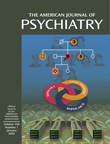Paul Genova’s book is thought-provoking in various ways. It is a short book, a compilation of two dozen essays, all previously published, about psychodynamic psychotherapy. Evidently, these could be read separately, dipped into here and there, but, to be engaging in the ways I describe, I recommend reading them in sequence as a book.
Why do clinical anecdotes and narratives always seem to find enough interested readers to warrant their frequent publication? Autobiographical case histories may hold a similar interest. People must be curious about matters that are usually most private, particularly psychiatric case histories, which give readers a glimpse at what those most secretive doctors, psychiatrists, actually do and say. Readers can also compare their worries, pains, symptoms, and treatments with those of others. Physicians are fascinated by case histories, too, trained as they were by case study, clinical presentations, and clinical pathological conferences. Like moths to a light, they are drawn to the challenge of thinking about how they would have diagnosed and treated the patients described.
Thus, for a psychiatrist reading Genova’s book about psychotherapy, part of the pleasure lies in the ongoing thoughts, emotional reactions, questions, insights, and mental disagreements and debates arising from his vignettes of psychotherapeutic encounters and his self-revealing and thoughtful, yet sometimes cryptic or open-ended, commentaries on them.
In this era of managed care, the latest DSM as Bible, and the emphasis on quick measurable symptom relief by appropriate medication and short manualized psychotherapies, one welcomes an experienced clinician’s insistence on the persistent benefits of open-ended psychotherapy. It takes longer, and the effects cannot easily be measured, but newer methods, such as brain-imaging techniques, are opening a window on the likelihood that the shortcoming may be in the measuring techniques rather than the treatment method.
Genova is relentless in insisting that listening to patients and hearing them on their own terms within a therapeutic relationship reveal important and therapeutically valuable information, and that there may be compelling gains other than symptom relief. He holds fast to only a few basic theoretical premises: the importance of wishes (i.e., drives); attachments; unconscious forces in shaping behavior; and developmental and subsequent experience in influencing current life. A strength of his approach to patients is that he really listens to them without filtering what he hears through just one theoretical approach. His understanding and interventions make use of a range of “schools,” from several psychoanalytic ones to cognitive behavioral and even some Eastern philosophical; nor does he spurn psychopharmacological relief when called for. He expresses great interest in dreams and their communications but pays surprisingly little attention to transference and countertransference as such. A few times he is inventive in the use of himself and his intuition, not determined by any identifiable theory. He is honest about psychotherapy not being able to help some patients, and he acknowledges his own defeats.
It is not surprising, then, that an experienced psychotherapist will find repeated occasions for surprise, questions, and disagreements with Genova, without ever questioning his integrity or his respectful and serious intent to help his patients. Being in the trenches with such a colleague makes this reading enjoyable. I found it more questionable whether the book has a place for training psychotherapists. They, too, are likely to enjoy the book, but it is not a book of instruction for good therapy. The interactions and interventions work for Genova but might even be dangerous if adopted out of context by a therapist with less experience. I am sure that Genova would agree that his book cannot take the place of work with patients, good supervision, and wide reading in applying theories and finding one’s own way.
To summarize, this is not a book from which one is likely to learn new and practically useful therapeutic approaches. It is a short, easy-to-read book in which psychotherapists are likely to feel in congenial but provocative company.

